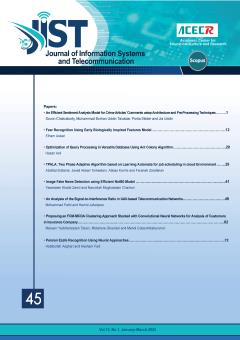Cancer of the breast is a difficult disease to treat since it weakens the patient's immune system. Particular interest has lately been shown in the identification of particular immune signals for a variety of malignancies in this regard. In recent years, several methods
More
Cancer of the breast is a difficult disease to treat since it weakens the patient's immune system. Particular interest has lately been shown in the identification of particular immune signals for a variety of malignancies in this regard. In recent years, several methods for predicting cancer based on proteomic datasets and peptides have been published. The cells turns into cancerous cells because of various reasons and get spread very quickly while detrimental to normal cells. In this regard, identifying specific immunity signs for a range of cancers has recently gained a lot of interest. Accurately categorizing and compartmentalizing the breast cancer subtype is a vital job. Computerized systems built on artificial intelligence can substantially save time and reduce inaccuracy. Several strategies for predicting cancer utilizing proteomic datasets and peptides have been reported in the literature in recent years.It is critical to classify and categorize breast cancer treatments correctly. It's possible to save time while simultaneously minimizing the likelihood of mistakes using machine learning and artificial intelligence approaches. Using the Wisconsin Breast Cancer Diagnostic dataset, this study evaluates the performance of various classification methods, including SVC, ETC, KNN, LR, and RF (random forest). Breast cancer can be detected and diagnosed using a variety of measurements of data (which are discussed in detail in the article) (WBCD). The goal is to determine how well each algorithm performs in terms of precision, recall, and accuracy. The variation of each classification threshold has been tested on various algorithms and SVM turned out to be very promising.
Manuscript profile


